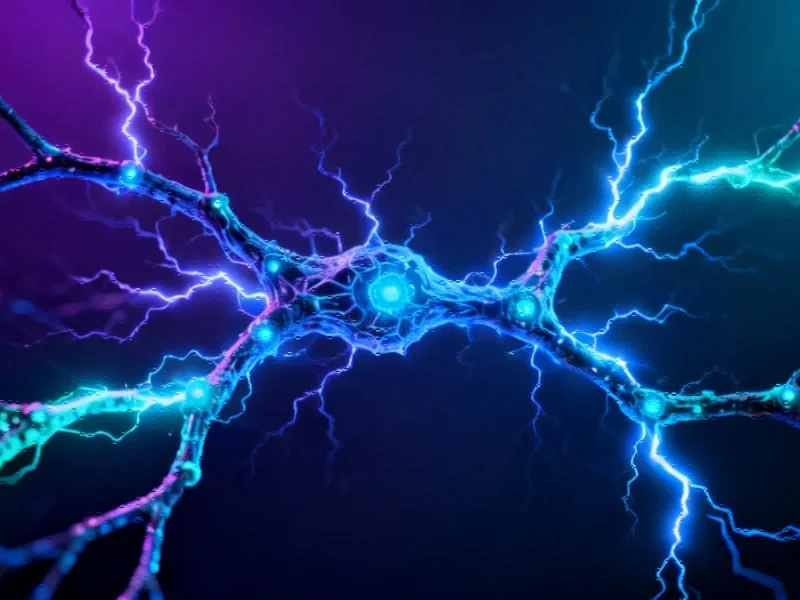The Hidden Architecture Behind Neural Network Decisions
Recent research published in Nature Machine Intelligence reveals that seemingly minor differences in neural network architecture create profoundly distinct computational approaches to solving identical problems. Scientists discovered that activation functions and connectivity constraints—often considered technical implementation details—actually determine how artificial neural systems develop their problem-solving strategies, with implications stretching from neuroscience to artificial intelligence development.
The study compared six different recurrent neural network (RNN) architectures across multiple cognitive tasks, systematically varying activation functions (ReLU, sigmoid, and tanh) and implementing Dale’s law connectivity constraints in some configurations. What emerged was a striking pattern: networks with different architectures arrived at the same solutions through completely different computational pathways, suggesting that architectural choices create powerful inductive biases that shape how artificial intelligence systems approach problems.
Visualizing Architectural Divergence in Neural Representations
When researchers analyzed the geometry of neural representations across different architectures, they discovered that tanh-activated networks developed fundamentally distinct representations compared to ReLU and sigmoid networks. Population trajectory analysis revealed that while ReLU and sigmoid RNNs formed symmetric, butterfly-shaped trajectory patterns that gradually separated during task execution, tanh networks diverged immediately at trial onset, creating orthogonal sheets of activity in the neural state space.
These differences weren’t merely cosmetic—they reflected deeper distinctions in how each architecture processed information. The research team quantified these differences using multidimensional scaling, confirming that networks clustered by architecture type in the embedding space. This suggests that activation functions impose specific computational constraints that guide how networks organize their internal representations, a finding with significant implications for neural network architecture choices in both research and practical applications.
Connectivity Constraints Shape Network Specialization
The implementation of Dale’s law—which restricts units to being exclusively excitatory or inhibitory, mirroring biological neural circuits—produced intriguing architectural effects. In ReLU and sigmoid networks, this constraint created more structured representations with trajectories clustering by context and choice. However, in tanh networks, Dale’s constraint had minimal impact on representation geometry, suggesting that different activation functions respond differently to biological plausibility constraints.
This discovery highlights how connectivity rules interact with activation functions to shape emergent computational properties. The finding that architectural elements combine non-linearly to determine network function provides crucial insights for engineers designing specialized AI systems. These related innovations in understanding system constraints parallel advances in other scientific domains where fundamental rules shape complex outcomes.
Single-Unit Selectivity Reveals Architectural Signatures
Beyond population-level dynamics, the research uncovered striking differences in how individual units within each network specialized for task components. ReLU and sigmoid networks produced cross-shaped selectivity patterns with continuously populated arms, while tanh networks displayed centralized clustering with distant outlier units. These architectural “signatures” persisted even in networks with randomized connectivity before training, suggesting they represent fundamental computational tendencies rather than learned adaptations.
The consistency of these patterns across multiple network instances indicates that activation functions create predictable biases in how networks distribute their representational resources. This understanding could help researchers reverse-engineer more biologically plausible AI systems and has parallels with how plant pathogens neutralize defense signals through systematic manipulation of communication pathways in biological systems.
Fixed-Point Analysis Uncovers Divergent Dynamical Mechanisms
Perhaps the most revealing finding emerged from analyzing the fixed-point configurations—states where network dynamics stabilize under constant inputs. ReLU and sigmoid networks showed similar fixed-point organizations, with clear separation according to context cues and choice options. Their stable fixed points clustered at decision extremes, with unstable points occupying intermediate positions.
In contrast, tanh networks displayed sheet-like fixed-point configurations with less suppression of irrelevant information. This fundamental difference in dynamical organization demonstrates that architecturally distinct networks develop different computational mechanisms for identical tasks. These findings mirror how complex systems in other domains, such as how pathogens hijack plant communication to cause disease, exploit specific structural vulnerabilities in system architecture.
Implications for AI Development and Neuroscience
The research carries significant implications for both artificial intelligence and neuroscience. For AI developers, it suggests that architectural choices fundamentally shape how systems generalize to novel situations and respond to unexpected inputs. Networks with different architectures made disparate predictions when presented with out-of-distribution inputs, confirming that inductive biases affect not just learning but also generalization.
For neuroscientists, these findings highlight the importance of selecting network architectures whose inductive biases align with biological data when using AI systems to model brain function. The discovery that seemingly minor architectural details create major differences in emergent circuit solutions suggests that reverse-engineering conclusions may be architecture-dependent. As the field progresses, understanding these market trends in computational approach selection will become increasingly important for both theoretical and applied research.
Future Directions in Architectural Optimization
This research opens several promising directions for future investigation. The clear architectural signatures observed across multiple tasks suggest that researchers might develop methods for selecting optimal architectures based on task requirements rather than through trial and error. Additionally, understanding how architectural biases interact with learning algorithms could lead to more efficient training procedures.
The finding that architectural differences manifest even in untrained networks suggests that initialization procedures might be optimized to work synergistically with architectural choices. As AI systems grow more complex, these insights into how micro-architectural decisions create macro-computational consequences will become increasingly valuable for designing next-generation intelligent systems that can adapt reliably to real-world challenges.
Ultimately, this research demonstrates that neural network architecture is not merely an implementation detail but a fundamental determinant of how artificial intelligence systems perceive, process, and solve problems—a crucial consideration as these technologies become increasingly embedded in critical applications across industries and society.
This article aggregates information from publicly available sources. All trademarks and copyrights belong to their respective owners.
Note: Featured image is for illustrative purposes only and does not represent any specific product, service, or entity mentioned in this article.



